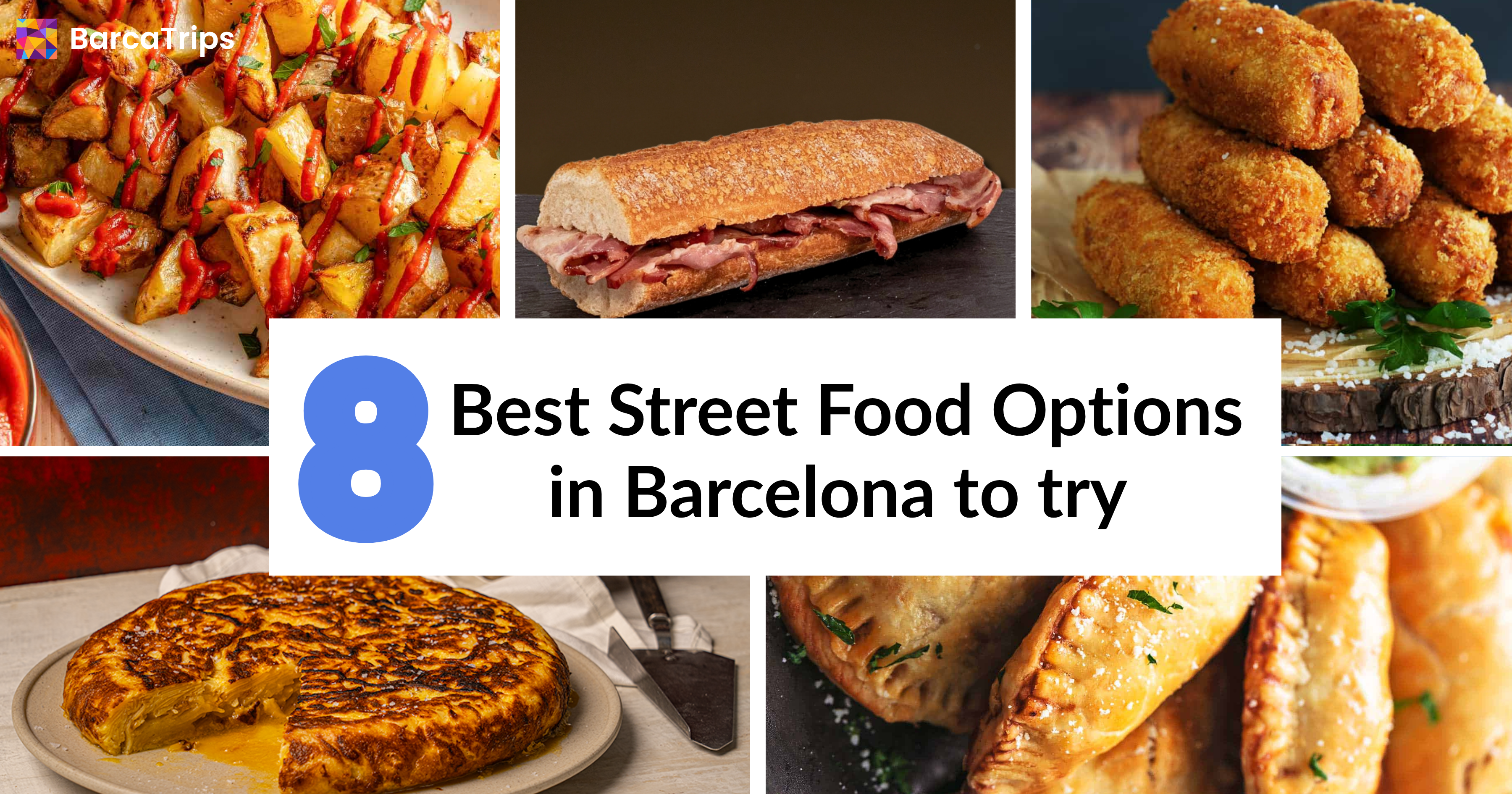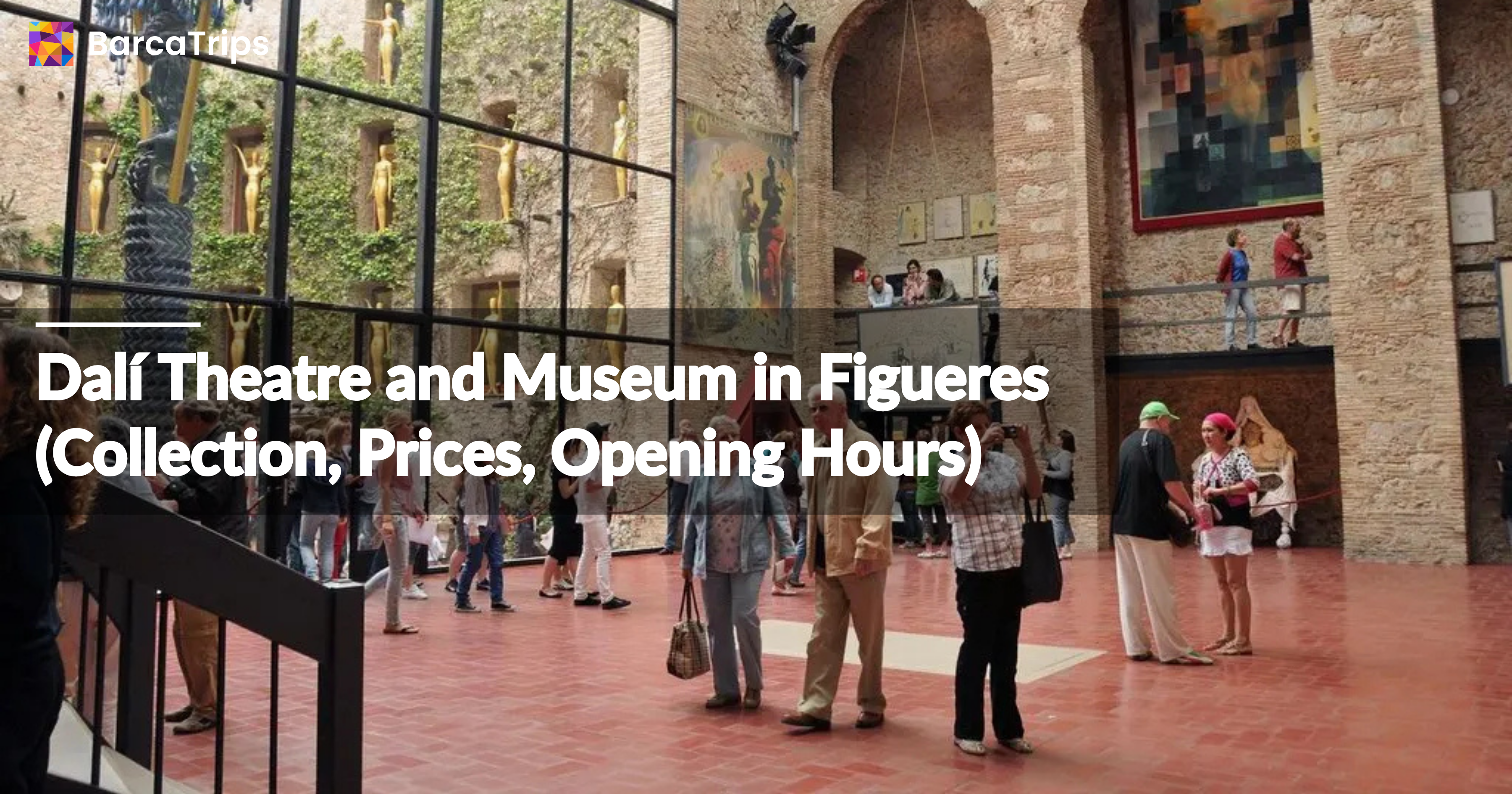Sagrada Familia
Guide to Gaudí's Unfinished Masterpiece

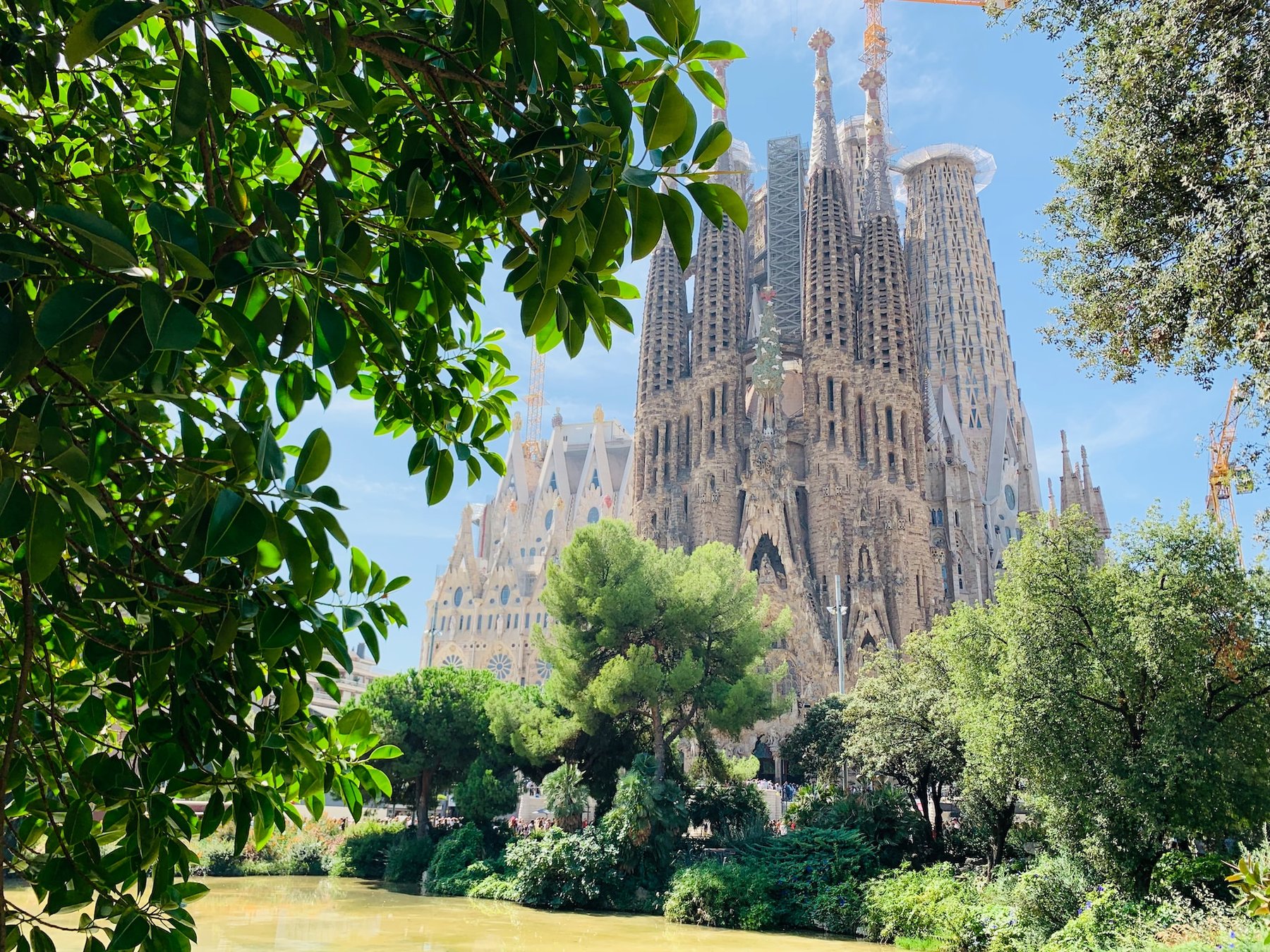
Barcelona had more than 12 million visitors in 2023 and the number keeps growing every year after 2020. For most travelers, Park Güell and the Sagrada Familia top their must-see list. This beautiful Basilica isn't even finished yet and it's still one of the most fascinating architectural sightings in the world.
It’s a once-in-a-lifetime experience that no Barcelona trip is complete without. Yet, not many visitors know all the interesting details about it. While it's not mandatory to know, it sure makes your visit a bit more special! So, why not be ready? You can also book a guided tour to not miss anything!
History of Sagrada Familia
The Sagrada Família’s story started in 1882 when architect Francisco de Paula del Villar began construction. His initial plan was for a traditional Gothic Revival church, with simple designs and minimal decoration. This project reflected the strong Catholic devotion of 19th-century Barcelona, during a time of cultural and spiritual revival.
Funding came entirely from private donations. It's considered that this communal support shaped the basilica's development and gave it a unique character over the years.
Antoni Gaudí’s Vision
In 1883, Antoni Gaudí took charge of the project and introduced a bold and imaginative approach. He envisioned the basilica as a “bible in stone,” with every detail carrying deep religious meaning. Gaudí drew inspiration from nature. He replaced Gothic straight lines with organic curves, intricate details, and innovative engineering.
The iconic spires, tree-like columns, and colorful stained-glass windows became trademarks of his design. His belief in a spiritual connection between nature and faith is clearly evident in his works.
Gaudí devoted more than 40 years to the basilica and spent his final 15 years fully immersed in the work. Although he died in 1926 with much of the basilica incomplete, his detailed plans guide other architects.
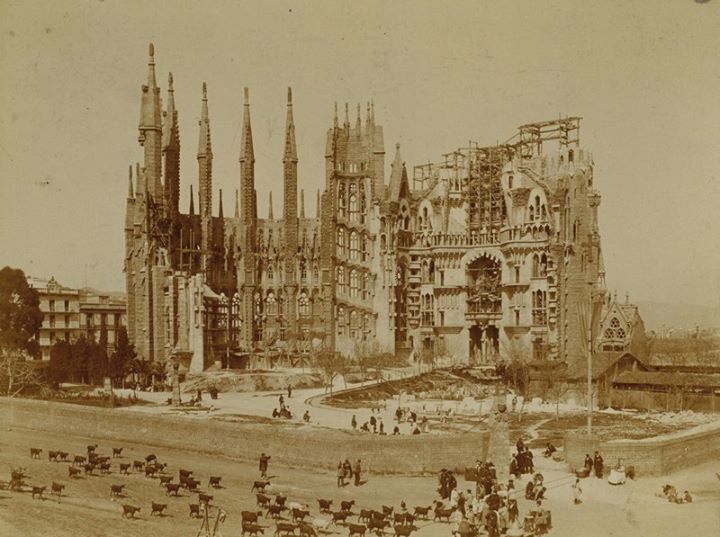
By anytka, licensed under CC BY-NC 2.0
Architectural Features
The Sagrada Familia showcases Gaudí's unique architectural style, seamlessly blending Gothic and Art Nouveau elements with organic, nature-inspired forms. The basilica boasts three monumental facades, each representing a different stage of Christ's life: the Nativity Facade, celebrating his birth; the Passion Facade, depicting his suffering and crucifixion; and the Glory Facade, still under construction, symbolizing his resurrection and ascension.
Eighteen towering spires grace the basilica's exterior, designed to represent the Twelve Apostles, the four Evangelists, the Virgin Mary, and Jesus Christ. Upon completion, the central tower, dedicated to Jesus Christ, will reach a staggering height of 172.5 meters (566 feet), making the Sagrada Familia the tallest religious structure in Europe.
The interior of the Sagrada Familia is an awe-inspiring sight, with colossal columns resembling trees branching out to support a magnificent, vaulted ceiling. The intricate stained glass windows bathe the space in a kaleidoscope of colours, contributing to the ethereal atmosphere within the basilica.

Symbolism and Iconography
The Sagrada Familia is steeped in symbolism, a testament to Gaudí's deep religious convictions and his desire to create a space where art and spirituality converge. The three facades, adorned with intricate sculptures and reliefs, narrate the story of Christ's birth, crucifixion, and resurrection. Meanwhile, the spires symbolize key figures in Christian theology.
The interior design also bears significant symbolic meaning. The tree-like columns represent the harmony between nature and the divine, and the basilica's numerous decorative elements embody various religious themes. Gaudí envisioned the Sagrada Familia as a "bible in stone," where every detail carries spiritual significance.
Construction Progress and Completion
Over 140 years, numerous architects, artists, and engineers have contributed to the Sagrada Família. After Gaudí’s death, challenges arose, including the loss of many original plans during the Spanish Civil War. Despite setbacks, architects like Domènec Sugrañes continued Gaudí’s work, respecting his unique style.
Design Challenges of Sagrada Familia
Gaudí’s unique and highly innovative vision proved difficult for subsequent architects to fully interpret and execute. Many of his plans were incomplete or existed only as sketches and fragile models. They left room for interpretation and potential deviations from his original intent.
His structural system was reliant on advanced arches and columns and presented engineering complexities that required creative solutions from future architects.
Financial Challenges
As already mentioned, the project has always depended on private donations. So, maintaining consistent funding has been a challenge all throughout the process.
Economic crises, including the Spanish Civil War and the global financial crisis, disrupted progress and strained available resources.
Historical and Political Challenges
The Spanish Civil War (1936–1939) caused significant damage to the basilica, including the destruction of many of Gaudí’s original models and drawings.
This loss significantly delayed construction. Political instability in Spain, particularly during the Franco era, further hindered the project’s advancement.
Technical Challenges
Material sourcing has been another major hurdle, as many of the materials and techniques Gaudí relied on are no longer readily available. Architects want to use traditional methods with modern construction technologies and this requires planning. However, it's notable how they want to keep the basilica’s integrity and respect for Gaudí’s vision.
How's the Construction Going?
Despite these challenges, progress accelerated in recent decades thanks to technological advancements like computer-aided design (CAD).
Today, the Sagrada Família stands as a UNESCO World Heritage Site and a symbol of Barcelona’s artistic and cultural identity.
When Will Sagrada Familia Be Finished?
Sagrada Familia's construction is still primarily funded through visitor ticket sales and donations. The project continues with a goal of completion by 2026, right after 100 years after Gaudí’s death.
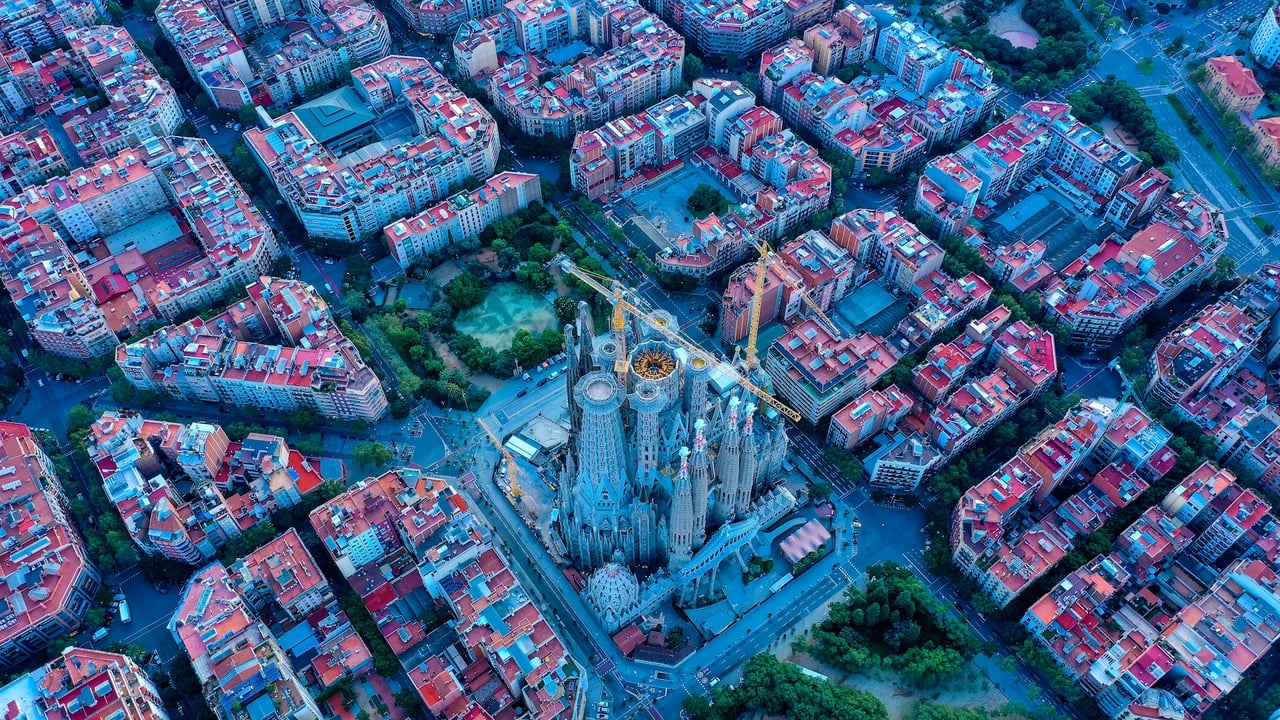
Visiting the Sagrada Familia
The Sagrada Familia is open all year-round, with hours varying depending on the season. Ticket prices range from €20 to €32, with discounts available for children, seniors, and students.
The most popular one is the fast track ticket with the access to the towers.
Booking tickets in advance is highly recommended, as they often sell out. They have guided tours in multiple languages. It's not needed of course, but these tours will give you valuable insights into the basilica's history, architectural features, and Gaudí's inspiration. Alternatively, audio guides can be rented for a self-paced tour experience.
You can also book a local guide that speaks your language. For instance, here's an English-speaking local who can help you out!
Opening Hours of Sagrada Familia
| Month | Monday to Friday | Saturday | Sunday |
|---|---|---|---|
| November - February | 9:00 am - 6:00 pm | 9:00 am - 6:00 pm | 10:30 am - 6:00 pm |
| March and October | 9:00 am - 7:00 pm | 9:00 am - 6:00 pm | 10:30 am - 7:00 pm |
| April - September | 9:00 am - 8:00 pm | 9:00 am - 6:00 pm | 10:30 am - 8:00 pm |
Note: "On 25 and 26 December, 1 and 6 January, opening hours will be from 9:00 am to 2:00 pm." - Sagrada Familia official website.
How to Get There?
The Sagrada Familia is easily accessible by public transportation, with the Sagrada Familia metro station (Lines 2 and 5) located nearby. Several bus lines also serve the area, so it's quite convenient.
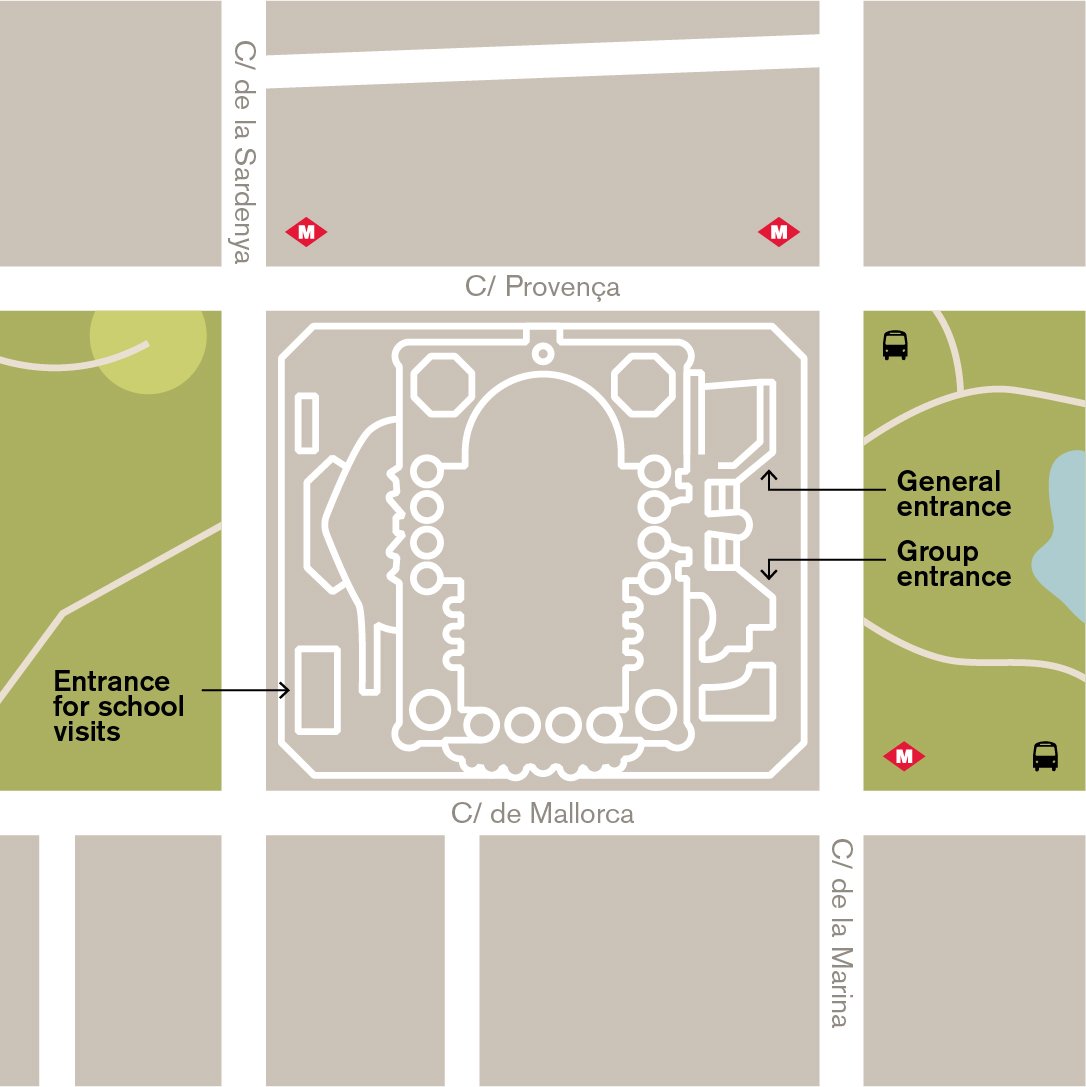
Sagrada Familia Entrance, Source: sagradafamilia.org
Nearby Attractions
The central location of the Sagrada Familia makes it an ideal starting point for exploring other nearby attractions in Barcelona. The Hospital de Sant Pau, a UNESCO World Heritage site and a stunning example of Catalan Modernisme, is just a short walk away. Other nearby points of interest include the vibrant shopping street, Avinguda Gaudí; the enchanting Parc Güell, another of Gaudí's masterpieces; and the bustling Passeig de Gràcia, which is home to Casa Batlló and Casa Milà, two more of Gaudí's iconic creations.
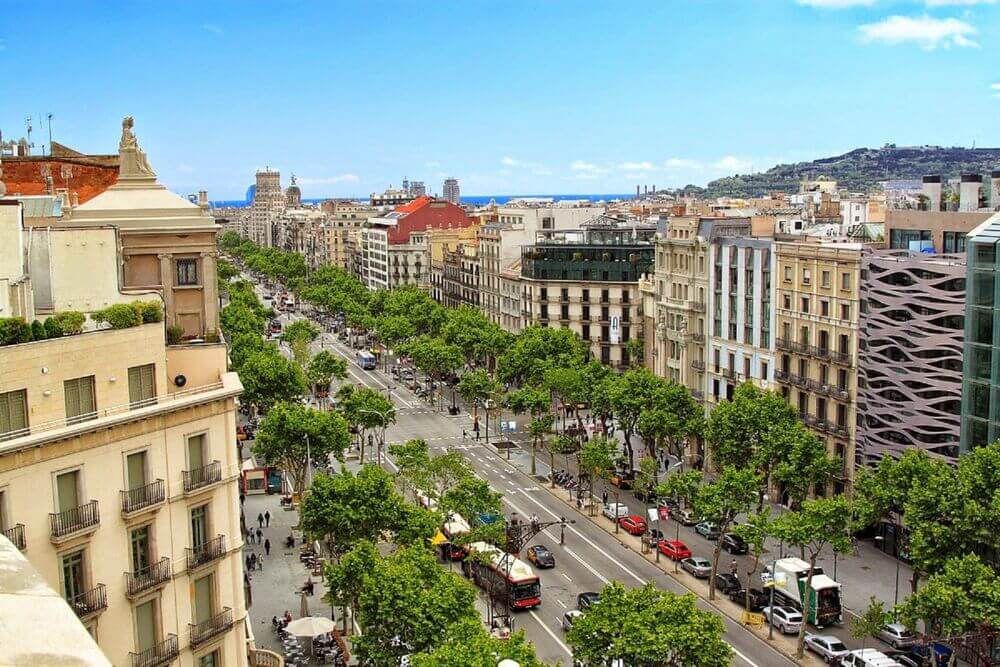
Photo: Passeig de Gràcia
Tips for Visiting
Book your tickets online well in advance to avoid disappointment, as they often sell out, especially during peak tourist season.
Allocate enough time to explore the basilica and its various spaces, including the museum, Gaudí's schools, and the crypt. Plan to spend at least 2 to 3 hours on your visit.
Don't forget your camera to capture the stunning architectural details and unique perspectives of the Sagrada Familia, both inside and outside.
Consider joining a guided tour to gain a deeper understanding of the basilica's history, design elements, and the inspiration behind its creation. Knowledgeable guides can provide valuable insights and answer any questions you may have.
Wear comfortable shoes, as there are multiple levels to explore, and the floors can be uneven in some areas.
Dress modestly when visiting the basilica, as it is a place of worship. Covering shoulders and knees is recommended. Read the detailed guide for the dress code for Sagrada Familia.
Visit early in the morning or later in the afternoon to avoid the busiest times and enjoy a more peaceful experience.
The Sagrada Familia is an awe-inspiring architectural marvel that embodies the creative genius of Antoni Gaudí and his profound devotion to his faith. As you explore the intricate details, symbolic elements, and captivating spaces of the basilica, you'll gain a deeper appreciation for Gaudí's vision and the enduring appeal of his extraordinary creations. When planning your trip to Barcelona, be sure to include the Sagrada Familia on your must-see list. This iconic landmark offers an unforgettable experience that will leave you with lasting memories of Barcelona's rich artistic and cultural heritage and a sense of wonder at the possibilities of human ingenuity and perseverance.
La Sagrada Familia
Where to find it and contact info.
Address:
Carrer de Mallorca, 401
Barcelona, 08001
More Locations
Also visit the locations in Barcelona





